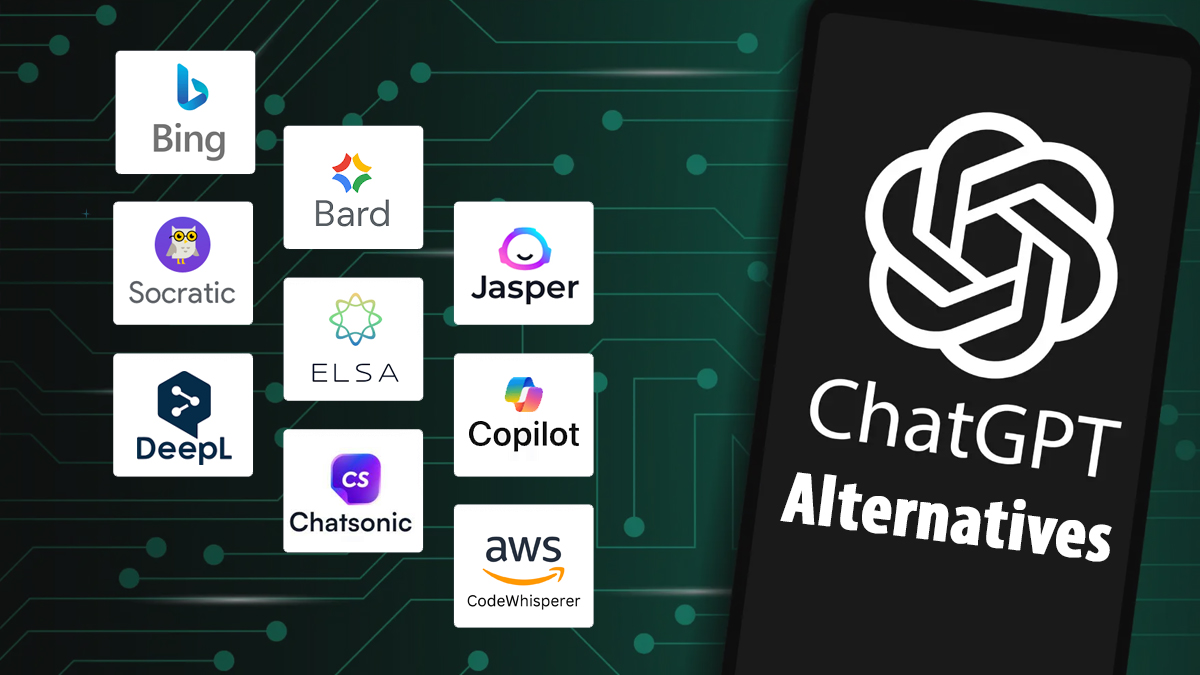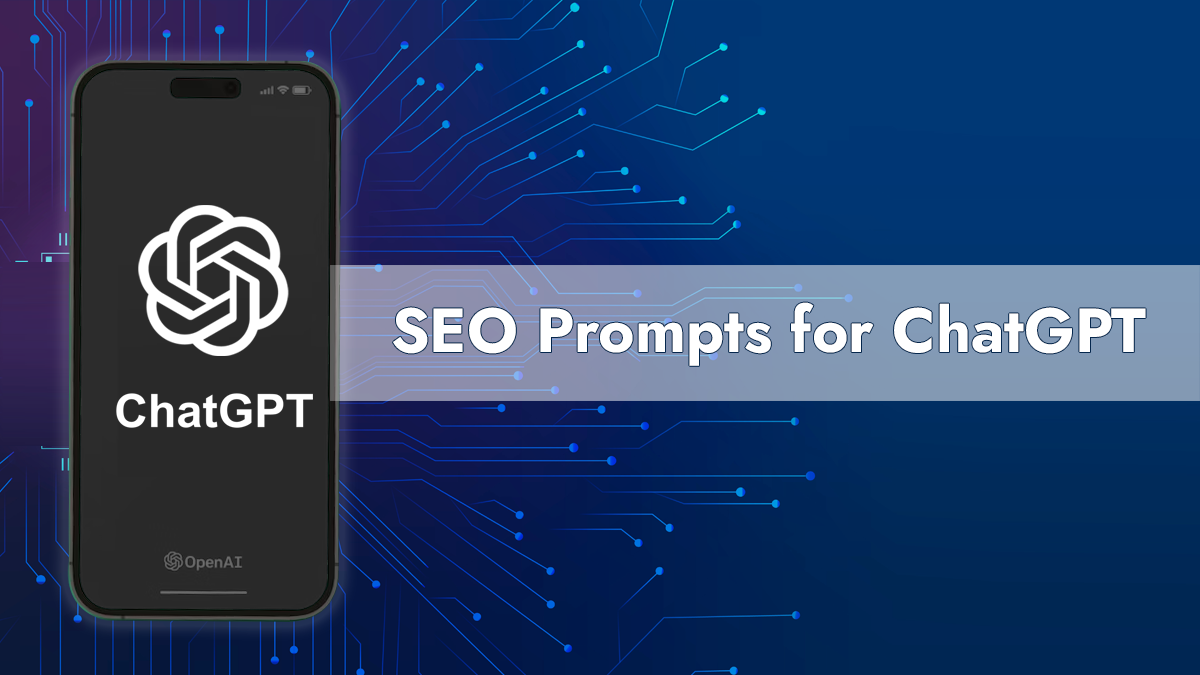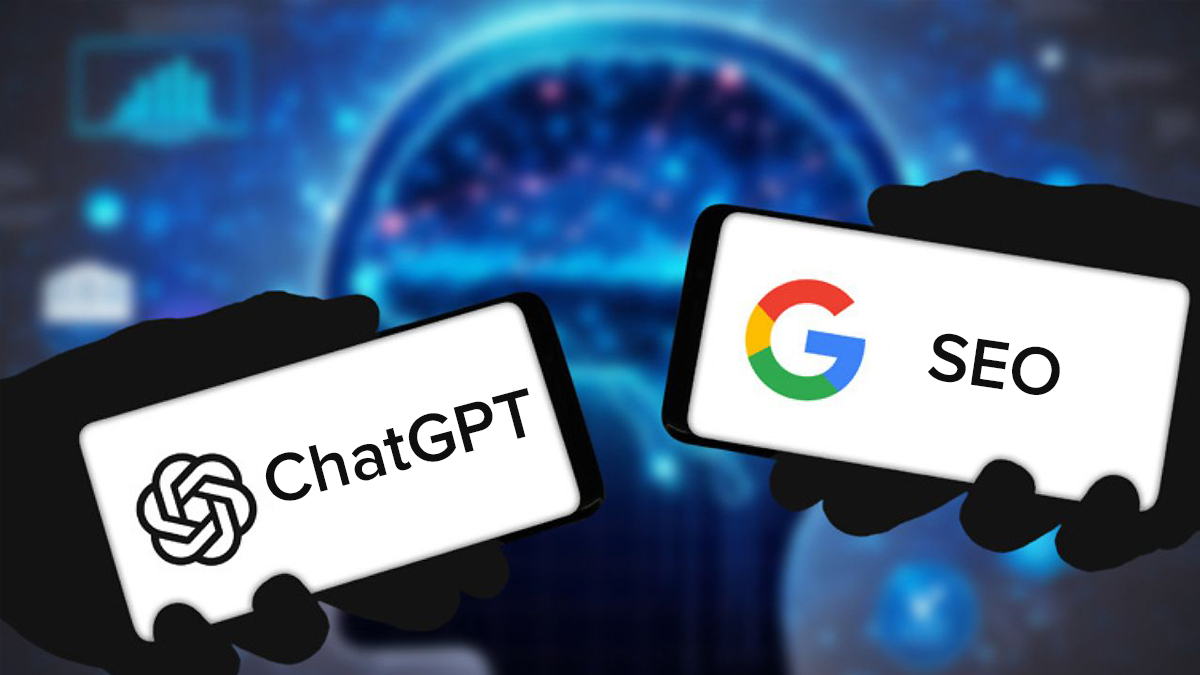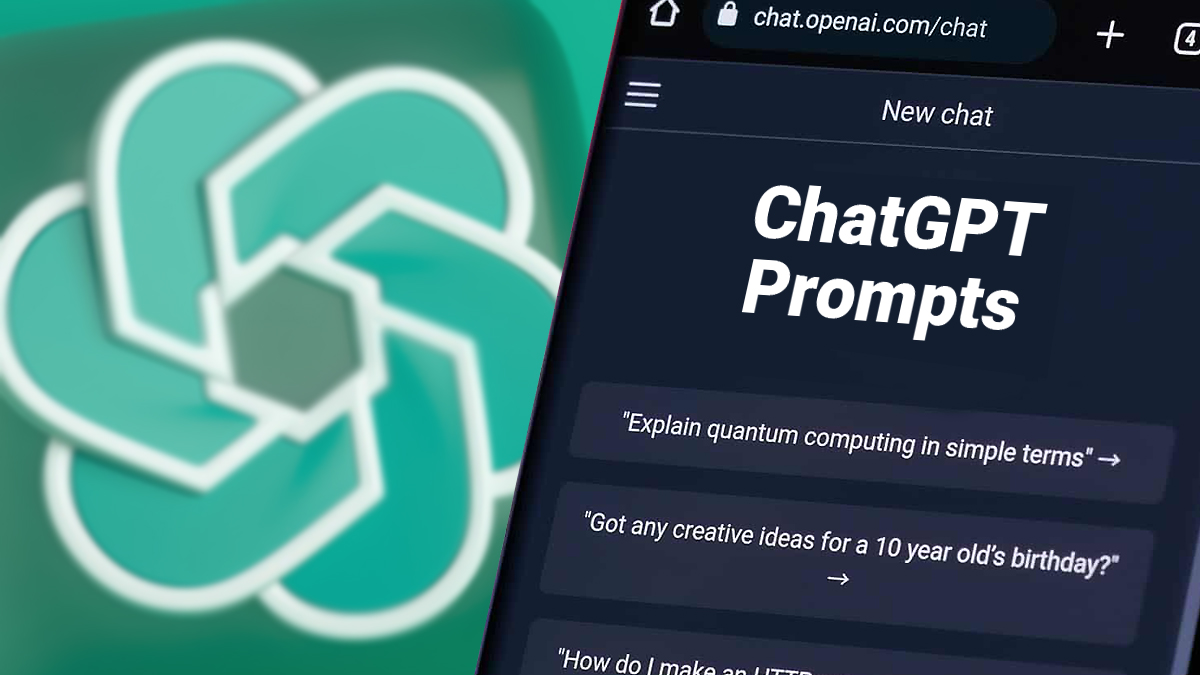If you’re a regular user of ChatGPT, you might have encountered certain limitations, such as knowledge gaps and reliability issues, particularly up to 2021. As you search for solutions, it’s worth considering ChatGPT alternatives. In this post, we’ll explore several free alternatives to ChatGPT, offering you a range of choices to elevate your AI interaction experience. Join us as we investigate these alternatives and find a new AI tool that suits your needs.
Digital marketing services utilize ChatGPT to enhance their client’s marketing efforts by creating engaging, personalized content, and automating customer interactions. ChatGPT assists in delivering targeted messaging, improving customer engagement, and streamlining marketing campaigns for better results.
ChatGPT Alternatives by Microsoft
Microsoft Bing AI (Free)
Experience the versatility of Microsoft’s Bing AI – and the best part? It’s absolutely free! Integrated into the Bing search engine, this AI tool provides both search and conversational capabilities.
The chat feature allows for customized interactions with the AI, catering to specific queries. Meanwhile, the search functionality connects users with pertinent links for more comprehensive information. Bing AI stands out with its ability to tailor chat responses according to user preferences, whether you’re seeking creativity, balance, or precision.
For example, if you need creative suggestions for repurposing old furniture, Bing AI is at your service. It’s more than a mere search engine – it’s your personal AI assistant, ready to enhance your online experience with tailored and insightful interactions.
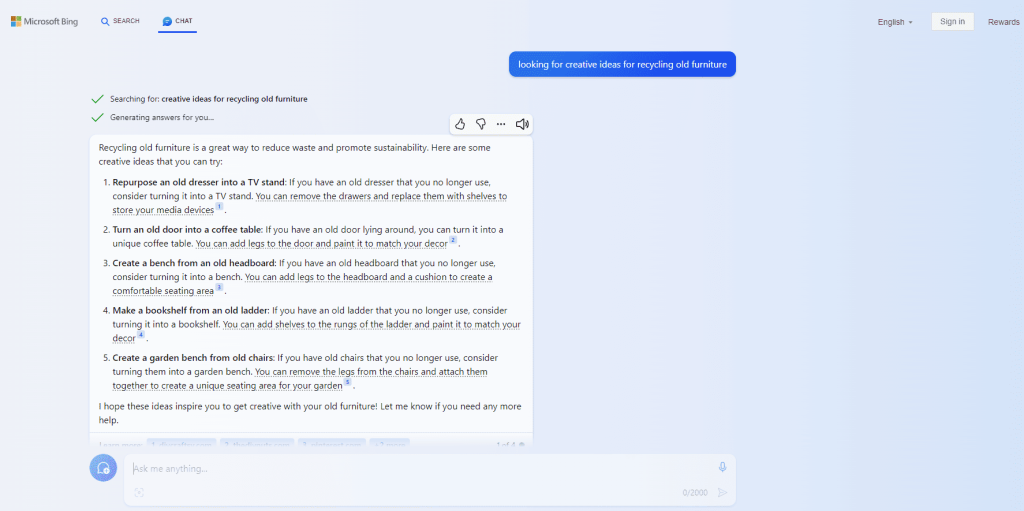
DialoGPT (Free)
DialoGPT stands as a significant advancement in AI, designed to simulate human-like communication with remarkable finesse. It excels in delivering engaging, smoothly flowing-conversations across various topics. At its core, DialoGPT uses advanced, large-scale transformer-based pre-training methods, allowing it to understand and respond to a wide range of inquiries with impressive depth.
A key feature of DialoGPT is its use of publicly available conversational data to create responses that are genuinely relatable. By immersing itself in the nuances of everyday English using this vast dataset, the AI significantly enhances the realism of its conversational ability. DialoGPT is an effective and flexible option for those seeking an engaging AI interaction, skillfully merging advanced pre-training with real-world linguistic data.
DialoGPT is an attractive option in the field of conversational AI, illustrating the progress in developing AI systems that can understand and participate in human-like conversations. It stands as a leading choice in AI-driven communication, offering a robust and user-friendly solution for both personal and professional use.
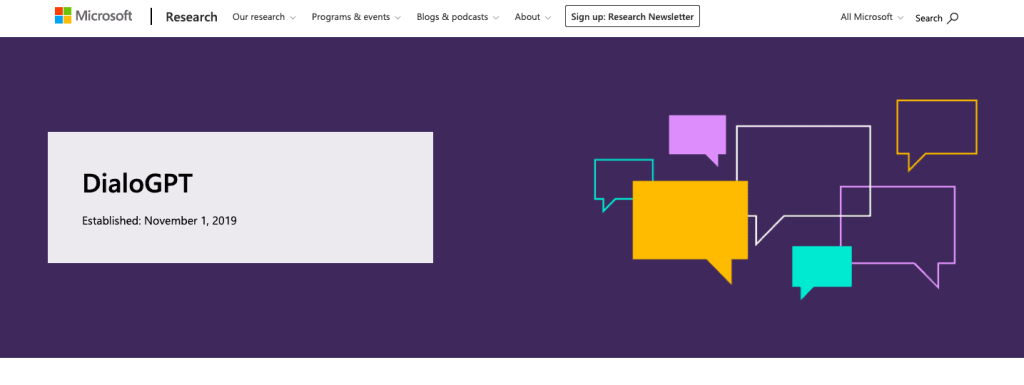
Also Read: How to Use ChatGPT for SEO Strategy – A Beginner’s Guide
Megatron-Natural Language Generation (Not Available Yet)
Megatron-NLG is a formidable contender in the language model arena, boasting the title of the “world’s largest and most powerful” with an impressive 530 billion parameters. This model is a combination of DeepSpeed and Megatron technologies, demonstrating exceptional skill in tasks like reading comprehension, commonsense reasoning, natural language inference, and clarifying ambiguous word meanings. It’s a comprehensive tool adept at handling a wide range of linguistic complexities.
However, accessing Megatron-NLG requires significant GPU resources. The heavy computational demands highlight the need for substantial infrastructure to fully exploit the model’s capabilities. This is a key consideration for anyone looking to incorporate it into their AI endeavors.
Despite its impressive abilities, Megatron-NLG remains exclusive and not yet available to the public. This creates a sense of anticipation and curiosity about its future availability. Language model enthusiasts are advised to stay updated on its public release.
Megatron-NLG is an enticing option for those seeking the forefront of language model technology. However, tapping into its full potential will require considerable investment in both time and computational resources, particularly as it moves towards a wider release.
ChatGPT Alternatives by Google
Bard AI(Free)
Bard AI distinguishes itself as a conversation-focused chatbot that seamlessly integrates with a wide range of Google apps and services. Its standout feature is the ability to provide succinct and informative responses to customer inquiries, ensuring effective communication. Unlike its competitors, Bard consistently offers outputs in a uniform format, providing users with a smooth experience devoid of unnecessary variability.
For instance, when posed with a question like “What are the key features of Google Workspace?” Bard promptly and succinctly offers important information, showcasing its capability to deliver pertinent content.
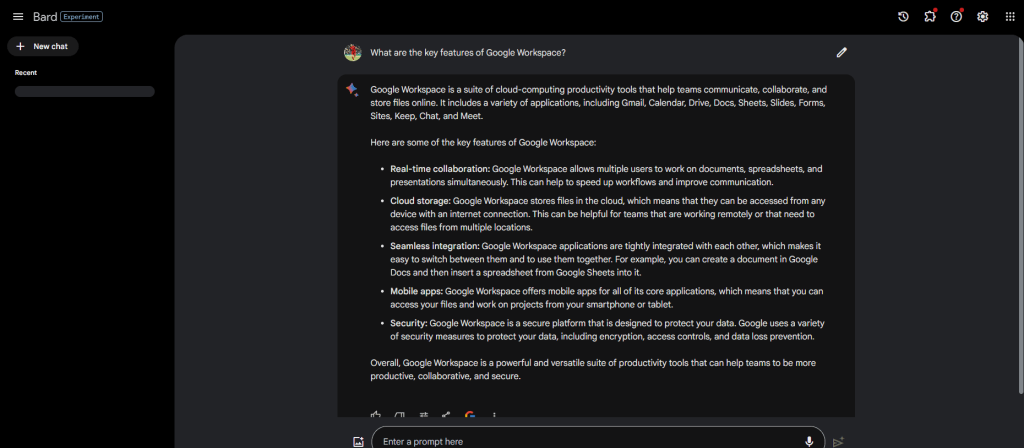
Beyond practicality, Bard is also celebrated for its creative abilities, acting as a catalyst for productivity and a valuable asset in brainstorming activities. Fueled by Google’s advanced language models, particularly the formidable PaLM 2, Bard is recognized for its impressive speed and reliability.
Bard emerges as a dependable and innovative ChatGPT alternative, offering smooth integration with Google’s ecosystem and a commitment to consistently providing concise yet relevant information. Its use of advanced language models cements its role as a versatile and effective tool for users seeking a chatbot that excels in both efficiency and creativity.
Socratic by Google
Designed as a personalized alternative to ChatGPT, Socratic by Google specifically addresses the educational needs of students in schools and colleges. It stands out by leveraging Google AI to sift through and present educational content from various websites, focusing on enhancing conceptual understanding and providing solid academic support.
Remarkably, this AI tool is compatible with both Android and iOS devices, ensuring broad accessibility. Its user-friendly interface includes multiple features, allowing students to interact with the platform through typing, picture uploads, and voice searches. This versatility is tailored to suit different learning styles and preferences.
Socratic aims to close comprehension gaps by presenting information in an easily digestible format, emphasizing clarity of concepts. It encourages students to engage in the way that best fits their learning style, offering various interaction modes, including text input, image-based queries, and voice searches.
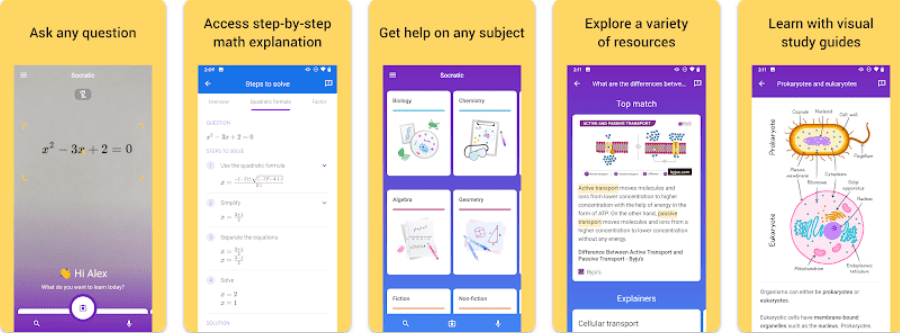
As an AI alternative to ChatGPT, Socratic aims to foster an improved and personalized educational experience for students at all levels, positioning itself as an essential component of the academic toolkit.
LaMDA (Not Available Yet)
Google’s LaMDA, short for Language Model for Dialogue Applications, represents a significant leap in conversational AI technology. Built on the ‘Transformer’ neural network architecture, LaMDA exemplifies Google’s commitment to advancing the forefront of natural language processing. This model is designed to understand the deeper intent behind user inquiries, marking a significant development in dialogue-based AI systems.
LaMDA’s foundation on the ‘Transformer’ architecture highlights Google’s dedication to exploring and innovating within the realm of natural language processing. This complex model is adept at identifying the nuanced intentions within user questions, representing a major step forward in conversational AI. Although Google has unveiled LaMDA, it’s important to note that it remains in development and is not yet publicly available.
Google’s ongoing work on LaMDA indicates a focus on delivering a refined and robust conversational AI tool to the market. When released, LaMDA is expected to substantially impact the field of conversational AI, and its public launch is highly anticipated.
Also Read: Stay Ahead of the Curve: 32 ChatGPT SEO Examples That Give You the Competitive Edge
ChatGPT Alternatives for Translation
Bloom (Paid)
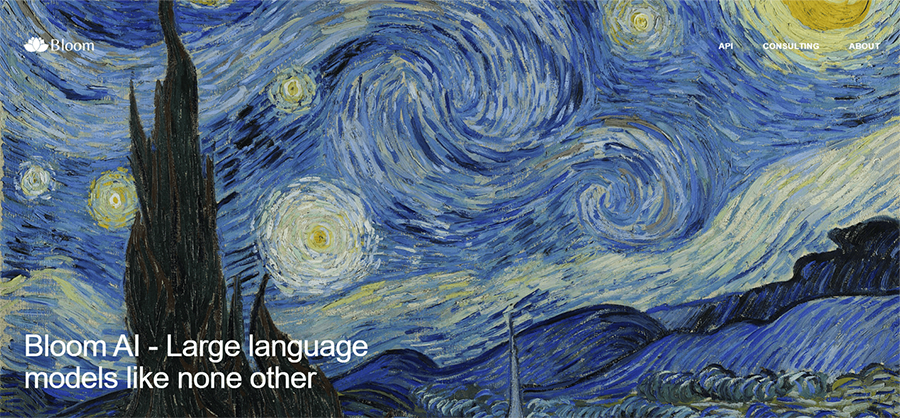
Similar to ChatGPT, Bloom functions as an open-access platform designed to aid in translation tasks across multiple languages. It promises fast performance, scalability, and adaptability when used as an API.
Bloom’s innovation lies in its large-scale language models, which are based on the advanced Transformers architecture. This foundation has been extensively trained on a diverse dataset by a team of specialists, equipping the AI for complex tasks like detailed categorization and accurate text extraction.
Bloom stands out for its ability to produce sentences of human-like quality, enhancing the efficiency and fluidity of language translation. However, its capabilities extend beyond translation; the system is adept at handling around 13 programming languages, demonstrating its versatility.
With its comprehensive approach, Bloom is not only a valuable resource for linguists and translators but also for developers working in various programming contexts. The combination of collaborative expertise and state-of-the-art technology makes this AI a dependable and effective tool in language processing and translation assistance.
Elsa Speak (Free and Paid)
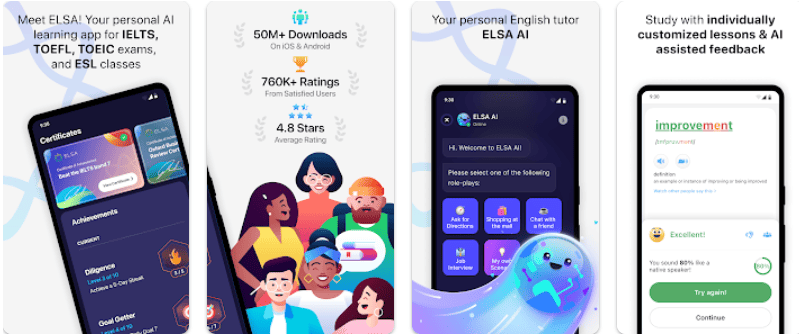
Elsa Speak, short for English Language Speaking Assistant, serves as an invaluable tool for English learners, packaged in a user-friendly software format. This AI-powered assistant excels in enhancing English pronunciation and is particularly notable for its ability to recognize various English dialects, catering effectively to non-native speakers.
The application’s versatility enhances the user experience, making it suitable for classroom, business, and personal use. Elsa Speak offers several free trials, allowing users to experience its features before opting for a subscription plan. This approach provides a practical way for learners to advance their language skills.
The subscription options are thoughtfully tailored to meet diverse needs, enabling users to choose the plan that aligns best with their learning goals and schedule.
Powered by advanced AI and designed for efficiency, Elsa Speak transforms the journey of mastering English pronunciation into an engaging experience. Whether you are a student aiming for academic success, professional honing language skills for the workplace, or someone pursuing personal language improvement, Elsa Speak offers a focused and effective solution.
DeepL Write (Free and Paid)
DeepL Write is an AI tool designed with a clear purpose: to enhance and refine individual writing skills. It goes beyond simple corrections, empowering users to polish their unique writing styles with intelligent synonym suggestions and skillful phrase restructuring. The experience is adaptable, supporting multiple languages and writing styles, adding a personal touch to every interaction.
A key feature of this AI is its translation capability, allowing users to translate both text and documents with ease. This functionality broadens its scope beyond just writing improvement, making it an invaluable asset for those engaged in multilingual contexts or collaborative projects across different languages.
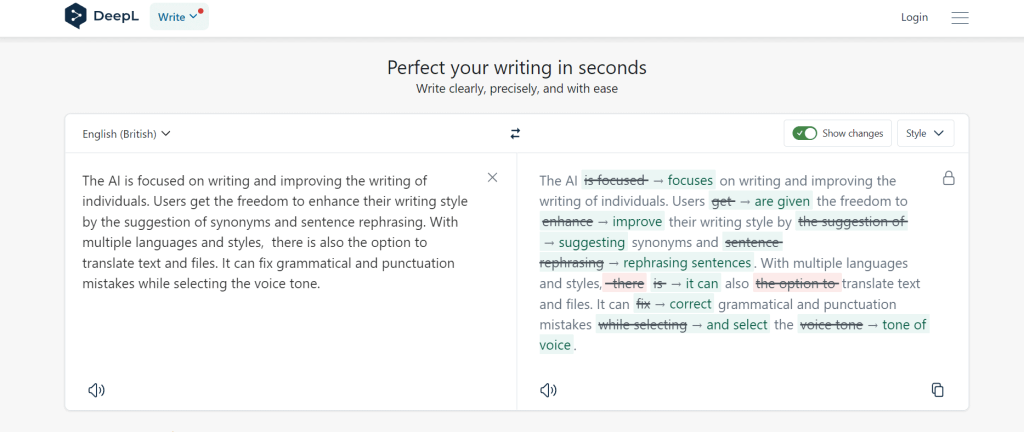
DeepL Write is more than a grammar and punctuation tool; it acts as a comprehensive writing partner. It not only corrects mistakes but also aids in selecting the right tone of voice, ensuring the message is delivered with clarity and impact. It’s like having a linguistic expert at your fingertips, ready to enhance and optimize your writing effortlessly.
ChatGPT Alternatives for Writing
Chatsonic (Writesonic) (Free and Paid)
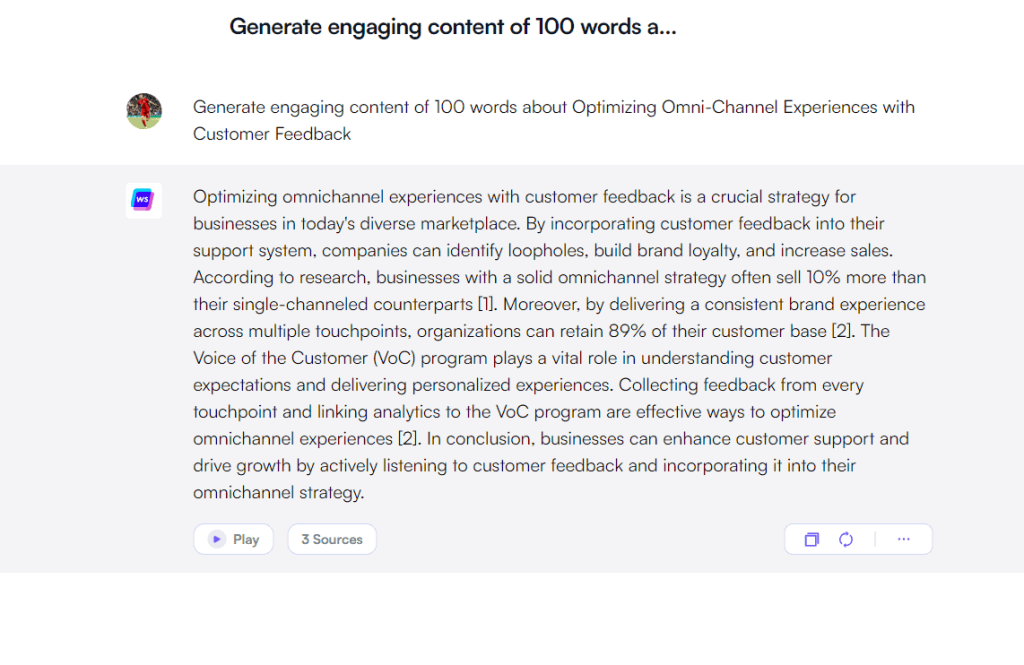
Chatsonic, a dynamic writing assistant, harnesses the advanced capabilities of GPT-4. Echoing ChatGPT, Chatsonic utilizes state-of-the-art Natural Language Processing (NLP) and Machine Learning (ML) technologies, positioning itself as a formidable tool for a wide range of writing tasks. Its intuitive user interface (UI) ensures a smooth experience for both free and premium users.
Empowered by GPT-4, Chatsonic offers an elevated level of intelligence, capable of generating compelling and coherent content. The conversational AI aspect personalizes the writing process, creating the feel of collaborating with a knowledgeable partner rather than just interacting with a machine. Its versatility is evident in its customizable features, designed to adapt to your specific needs.
A distinguishing aspect of Chatsonic is its capacity to stay up-to-date. By integrating real-time Google search data, it seamlessly includes the latest trends and information, ensuring your content remains relevant and timely. This feature is particularly valuable for writers aiming to produce content that connects with current audiences.
Whether you are a casual user exploring the free version or a professional seeking the advanced capabilities of the premium edition, Chatsonic meets your needs. Experience the future of writing assistance with an AI that blends GPT-4’s prowess with user-friendly functionality and real-time relevance.
Claude (Free and Paid)
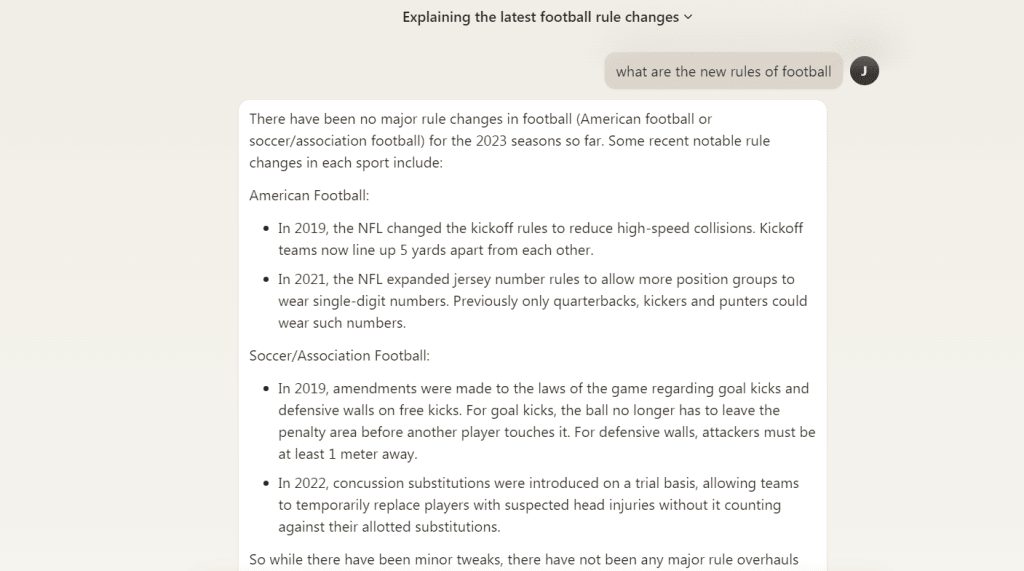
Claude, developed by Anthropic, is a powerful conversational AI designed for efficient multitasking. Setting itself apart from predecessors, Claude can manage multiple inputs at once, offering users a dynamic and streamlined experience.
The development of Claude focuses on creating a kind, trustworthy AI companion, emphasizing user safety in its interactions. This commitment to user comfort is integral to Claude’s design, making it not only effective but also a secure and dependable tool.
Claude’s versatility is apparent in its wide range of capabilities, from aiding in creative writing and coding to answering diverse questions. Users have the flexibility to choose from various behaviors, personalities, and tones, allowing for a customized interaction tailored to individual requirements.
Anthropic’s Claude emerges as a groundbreaking conversational AI, exceeding user expectations by offering a reliable and enjoyable experience across various tasks. Claude represents Anthropic’s commitment to advancing conversational AI, delivering a sophisticated and user-friendly solution to consumers.
Jasper Chat (Free Trial and Paid)
Jasper AI distinguishes itself as an engaging conversational partner, boasting a range of advanced AI functionalities. It effortlessly navigates natural dialogues, excels at brainstorming ideas, refining information, and even incorporating humor for a more enjoyable user experience.
With its ability to handle complex topics, Jasper AI creates a user-friendly platform for diverse discussions. It draws from a vast knowledge base sourced from billions of data points, enhancing its contextual understanding and improving user interaction.
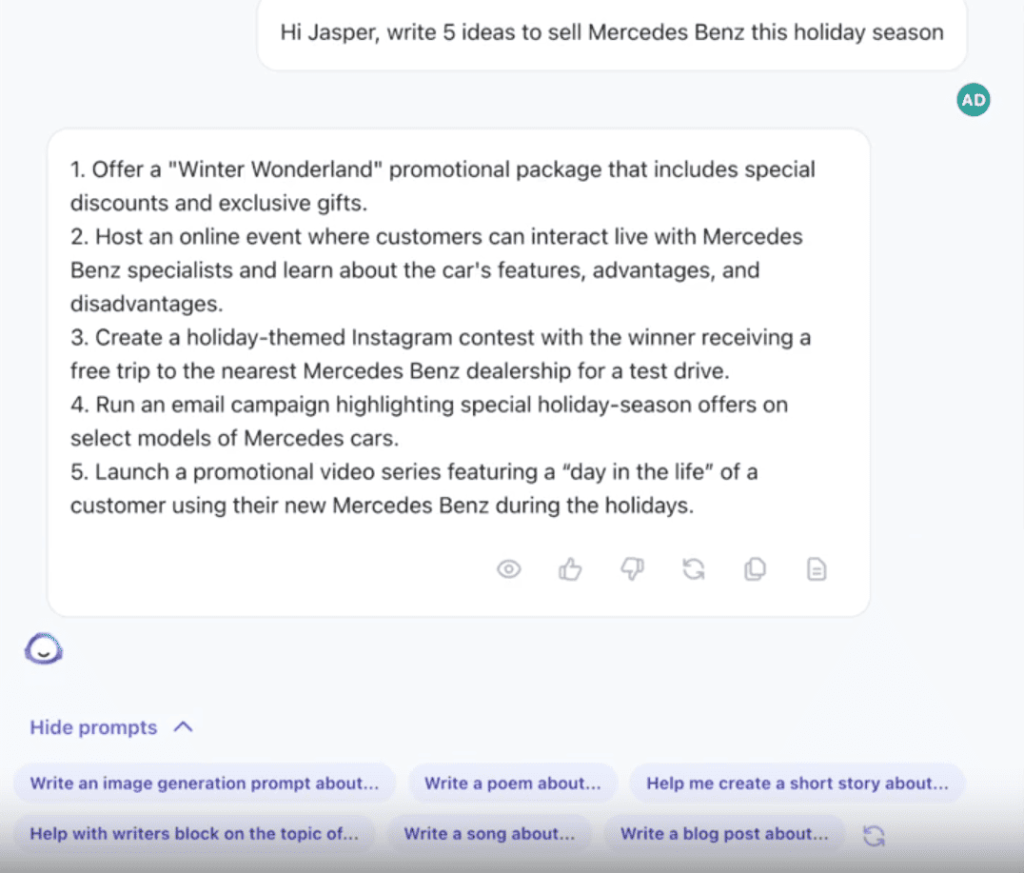
For example, when asked to provide “five suggestions for selling Mercedes-Benz this holiday season,” Jasper AI can offer insightful and relevant recommendations.
In addition to its intellectual prowess, Jasper Chat is multilingual, offering support in multiple languages to cater to a global audience. This multilingual capacity allows users to interact in their preferred language. Furthermore, Jasper Chat prioritizes security, featuring enterprise-level certifications to protect user data and interactions.
Jasper AI’s commitment to accuracy bolsters its dependability, making it a reliable resource for various needs, from casual conversations to refining professional materials. In essence, Jasper AI combines linguistic finesse, multilingual capabilities, and stringent security measures to provide a well-rounded and user-focused conversational experience.
OpenAI Playground (Free and Paid)
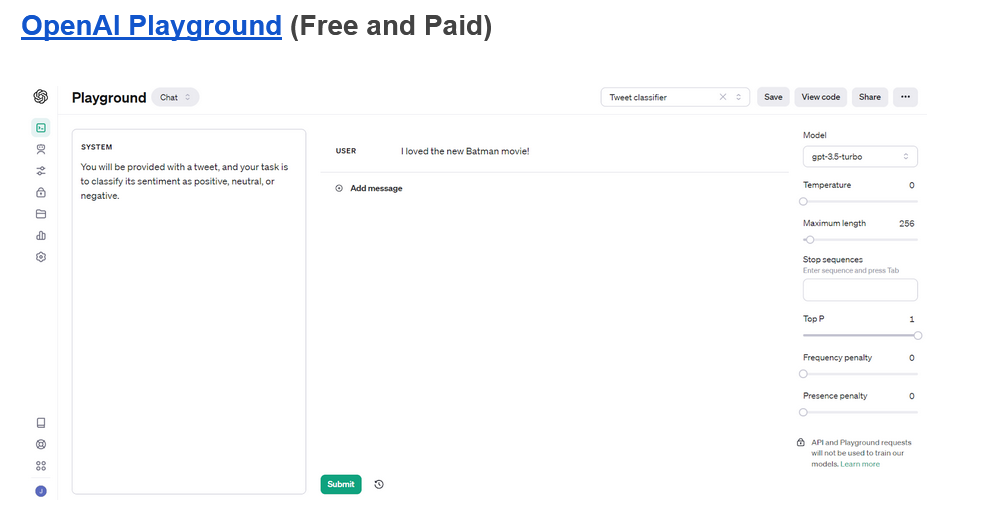
The developers behind ChatGPT have introduced their own alternative called OpenAI Playground. Unlike ChatGPT, OpenAI Playground is explicitly designed for content creation, making it a versatile platform that leverages the same AI system as ChatGPT. This allows users to experiment with various advanced AI tools provided by OpenAI.
Its adaptability sets OpenAI Playground apart, providing users with different modes to engage with artificial intelligence. These include chatbot interactions, Q&A sessions, and storytelling. One of the standout features of OpenAI Playground is the ability to switch between AI modes seamlessly. Users can instruct the system to function as a chatbot, respond to inquiries, or generate a narrative.
Additionally, the platform offers content editing capabilities, enabling users to extend, modify, and rewrite existing text. The AI’s response can be customized by adjusting variables that control repetition or complexity in the generated information.
However, OpenAI Playground does have some limitations. Users need an OpenAI account to access its features, although the initial use of the Playground is free. It’s worth noting that the free credit provided upon sign-up is limited, and once exhausted, users must purchase additional credits to continue using the application.
ChatGPT Alternative for Coding
CoPilot (Paid)
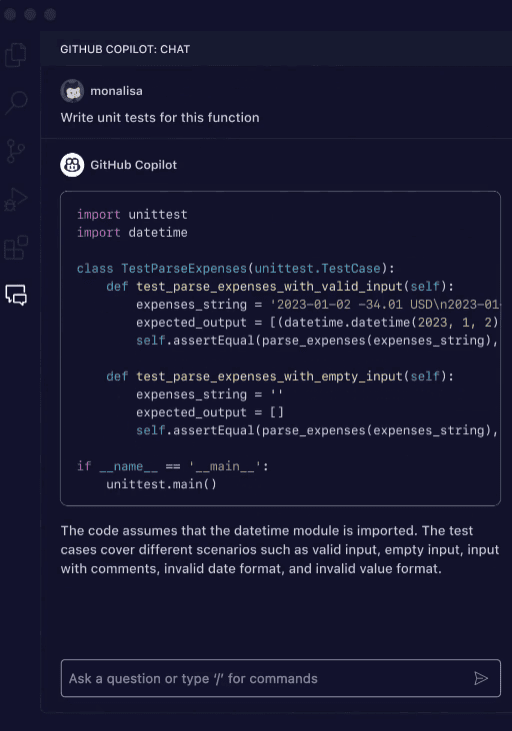
CoPilot, integrated into Microsoft 365, is crafted to efficiently address programming challenges. It is an invaluable asset for learning new programming languages and optimizing coding processes.
This tool’s automation feature excels at generating repetitive code segments, significantly boosting developer productivity. CoPilot integrates seamlessly with the Microsoft suite, including Word, Excel, PowerPoint, Outlook, and Teams, creating a harmonious user experience across these applications.
One of CoPilot’s key attributes is its support in navigating various programming languages, making it an adaptable resource for developers at any skill level. This flexibility is essential in the fast-paced technology sector, where proficiency in multiple languages is increasingly important. CoPilot’s intuitive interface ensures easy accessibility, allowing developers to fully utilize its capabilities without undue complexity.
CoPilot also enhances teamwork through its integrated Chat feature, facilitating efficient communication and data sharing within various company applications. This capability promotes a collaborative work environment, which is crucial in modern software development.
Ultimately, CoPilot within Microsoft 365 not only addresses coding challenges but also contributes to a more unified and integrated workflow, meeting the current demands for collaborative and efficient software development.
Amazon CodeWhisperer (Free)
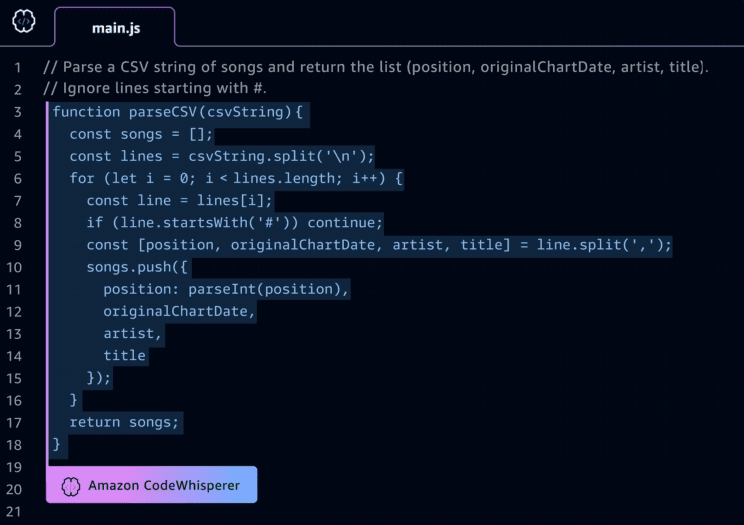
Amazon CodeWhisperer presents itself as a formidable ChatGPT alternative, designed to expedite application development while prioritizing robust data security. This AI tool, developed for user assistance, excels in various tasks, including reference tracking and generating a wide range of code suggestions. Its seamless integration into existing workflows enhances productivity significantly.
A notable aspect of CodeWhisperer is its provision of 50 security scans per user each month, reflecting Amazon’s dedication to creating a secure computing environment. This feature plays a crucial role in protecting sensitive information and maintaining the integrity of the development process.
Trained on an extensive dataset comprising billions of lines of code, Amazon CodeWhisperer is capable of producing outputs ranging from concise code snippets to complete functions. This versatility allows users to customize their experience to meet specific requirements, leading to a more dynamic and efficient development process.
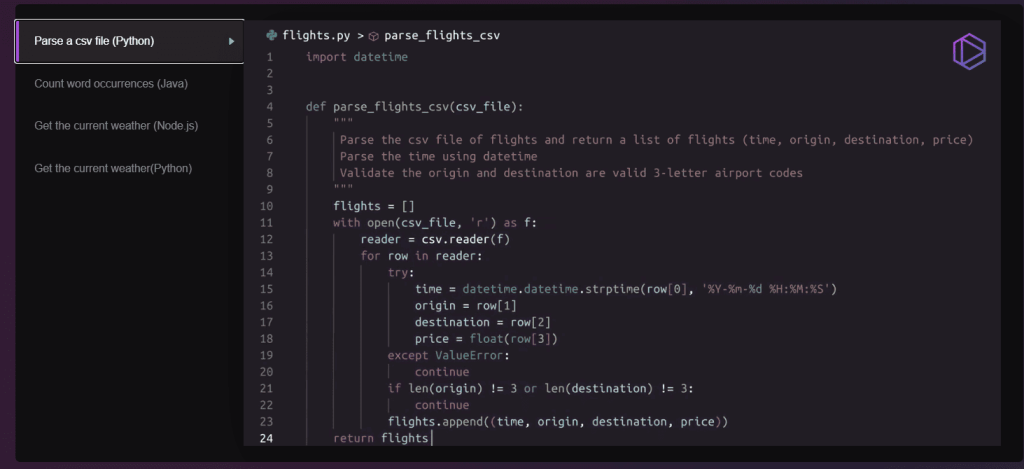
Tabnine stands out as a proficient AI assistant committed to ensuring high-level code security. Known for its rapid code generation, adaptable database integration, and an impressive 30% automation rate, Tabnine is an invaluable resource for both experienced professionals and aspiring developers. It enhances coding speed and precision across various scenarios.
Tabnine’s exceptional language support sets it apart, addressing the needs of programmers working in multiple programming languages. It excels in auto-completing code lines, significantly improving productivity for those proficient in Python, Java, or any of the other 30+ languages it supports.
More than just a tool, Tabnine represents the culmination of meticulous development by a dedicated team. Its emphasis on security, combined with a commitment to rapid code generation and automation, highlights the depth of expertise and thoughtful design inherent in Tabnine’s architecture. With its user-friendly interface and comprehensive capabilities, Tabnine effortlessly becomes an integral part of developers’ toolkits, enhancing their coding journey.
Codeium (Free and Paid)
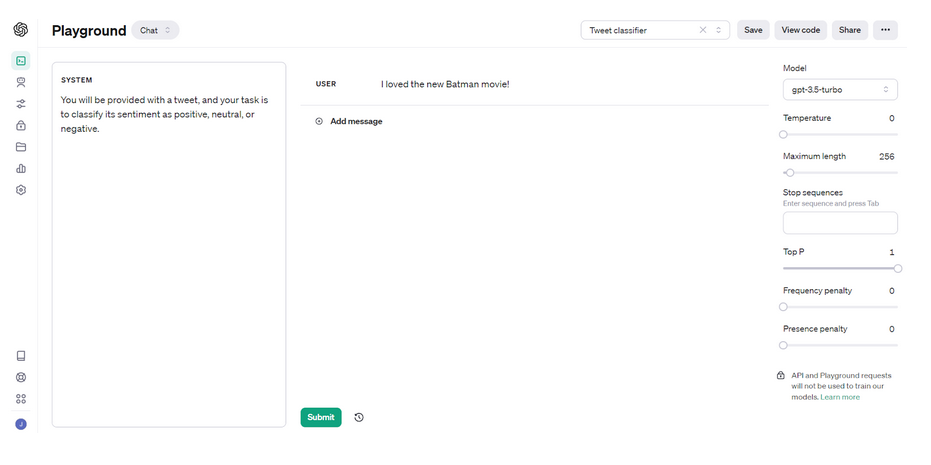
Codeium stands out as a dedicated AI generative assistant tailored specifically for developers, aiming to enhance the coding experience. It’s designed to streamline coding processes by providing essential features like autocomplete, improved code structure through refactoring, and generating comments to improve code comprehension.
Codeium’s underlying AI model is trained on publicly available codebases, and it offers a chat system that’s freely accessible without any paywall restrictions. One distinctive feature is its built-in Search functionality, allowing developers to swiftly and efficiently navigate through codebases.
Functioning as an extension for popular IDEs such as VSCode and JetBrains, Codeium is also accessible through browsers, featuring a live mode that facilitates the exploration of spontaneous code ideas.
Codeium demonstrated commendable performance in real-world tests, effortlessly handling various coding tasks. For instance, it adeptly generated a JavaScript minimax function for a tic-tac-toe game, complete with clear comments and tests. Furthermore, Codeium showcased its capability by seamlessly searching for APIs within the IDE and integrating them.
Individuals can enjoy Codeium at no cost, while teams can opt for a subscription priced at $12. It’s worth noting that there may be occasional instances of incomplete suggestions, but the live browser feature stands out as a significant advantage.
ChatGPT Alternatives for Research
YouChat (Free)
YouChat emerges as a unique AI-driven search engine, leveraging the capabilities of the Large Language Model. It introduces a conversational approach to internet searches, revolutionizing user interactions with online queries. This innovative technology integrates smoothly with various browsers, allowing users to set it as their default search engine.
User-friendly by design, YouChat offers categorized search options such as All, Social, and Image, providing a tailored search experience. The platform adapts to user preferences, serving both those who seek a comprehensive search experience and those who focus on specific areas.
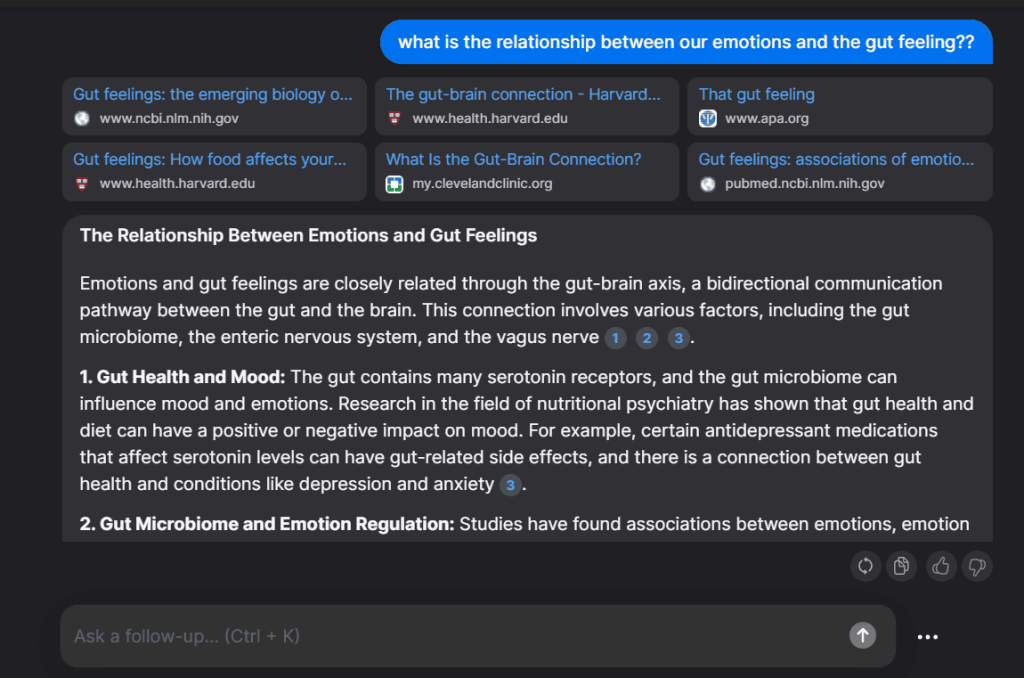
YouChat not only expands digital search possibilities but also caters to users who prefer traditional search methods. It represents the future of online discovery, blending advanced technology with a user-centric interface.
Perplexity (Free and Paid)
Perplexity, accessible as both a website and an app, is a groundbreaking real-time search AI, invaluable for researchers. It enhances the research process by offering access to the latest information. The website version is particularly effective, providing real-time data and credible citations to support research findings.
The platform’s user-friendly UI allows easy navigation with tabs like All, Social, and Image, facilitating customizable search experiences. Whether you’re looking for detailed answers or step-by-step guides, Perplexity’s versatile functionality goes beyond what traditional search engines offer.
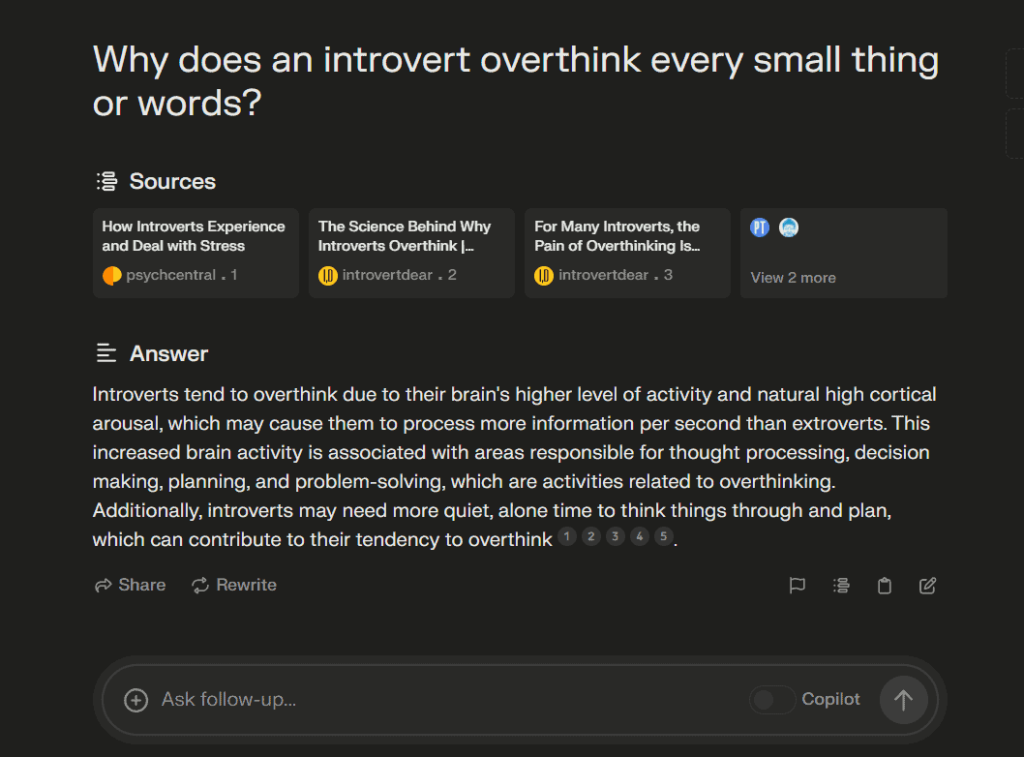
Its availability on both website and app platforms increases accessibility, enabling users to leverage its features across different devices. Perplexity is an excellent choice for researchers and information seekers who require quick and accurate information, positioning it as a top choice among real-time search-performing AIs.
Elicit (Free and Paid)
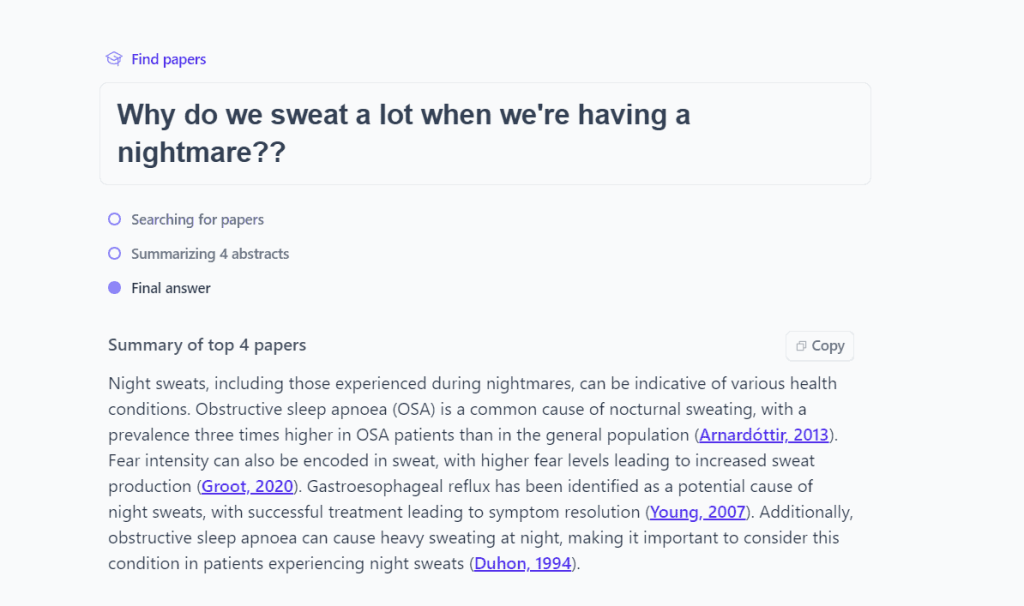
The emergence of study-specific AIs has transformed research, offering seamless navigation through extensive academic literature. These sophisticated AI systems are adept at analyzing multiple research papers simultaneously, providing users with concise summaries and facilitating quick understanding of complex topics.
Elicit AI stands out for its ability to extract and summarize key information efficiently, breaking down intricate data into clear and concise statements. It offers access to an expansive archive of over 200 million published documents, fostering a rich environment for academic research and discovery.
ChatGPT Alternatives You Can Talk to
Chinchilla (Not Available Yet)
Chinchilla, developed by DeepMind and powered by GPT-3, the same technology behind ChatGPT, has been making waves with its potential to outperform existing generative AIs in terms of speed and efficiency. However, it’s important to note that Chinchilla is currently in the testing phase and not yet available for public use.
Upon its release, Chinchilla promises to redefine the AI landscape by enabling the creation of AI products without the complexity of programming. This approach is geared towards making AI development more accessible to a wider audience. A notable feature of Chinchilla is its energy efficiency, which allows for reduced power consumption without compromising on accuracy.
In conclusion, while Chinchilla offers exciting prospects for AI’s future, its actual impact will only be ascertainable once it is officially released. Keep an eye on this potential game-changer in the rapidly evolving field of artificial intelligence.
Replika (Free and Paid)

In today’s world, where loneliness is a prevalent issue in many communities, the demand for an AI companion that mirrors human interaction is more apparent than ever. Replika addresses this need by being more than just a communication tool. It excels in grasping the nuances of your emotions, thoughts, and daily life experiences.
What distinguishes Replika is its adaptability—it isn’t limited to text-based interactions. The AI effortlessly transitions into video conversations, bringing a visual dimension to your virtual connections. Furthermore, Replika is branching out into augmented reality, offering users a chance to share and experience real-life events in a more immersive way. As our society grows increasingly digital, Replika serves a wide range of needs, catering to those seeking authentic companionship.
Character.AI (Free and Paid)
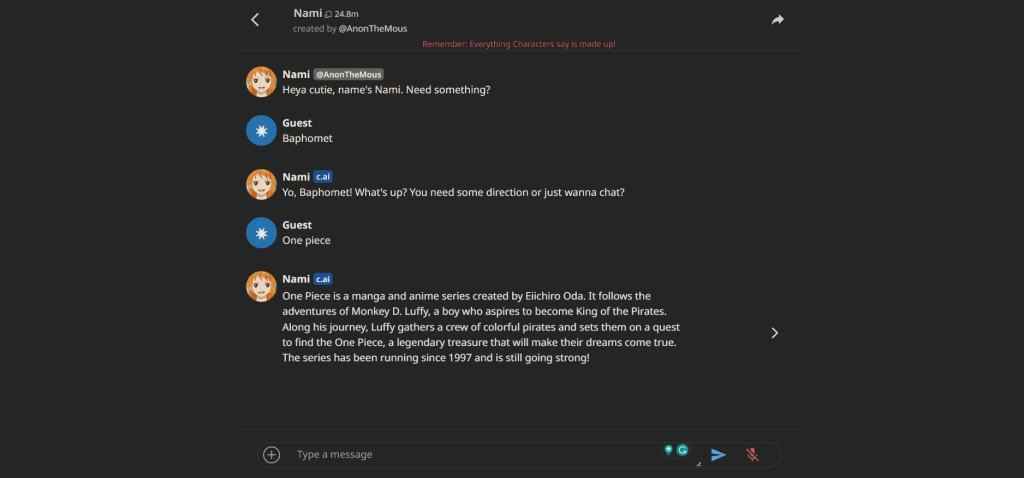
Character.AI stands out as an innovative platform that brings your imaginative concepts to life. This AI companion, available in both free and paid versions, allows you to interact with fictional characters from your imagination.
Character.AI is more than just an entertainment tool; it’s a valuable asset for practicing languages, developing ideas, or planning vacations. Whether you’re a language enthusiast, a creative thinker, or someone in between, this AI adapts to your specific needs. It offers you the freedom to engage and interact with your creative thoughts in a unique way.
With Character.AI, every interaction is an opportunity to unleash your creativity. Try it out for free, or opt for the premium features, tailored to your interests and requirements. Character.AI invites you to dive into the boundless world of imagination, bringing your ideas to life in a captivating way.
KoalaChat (Paid)
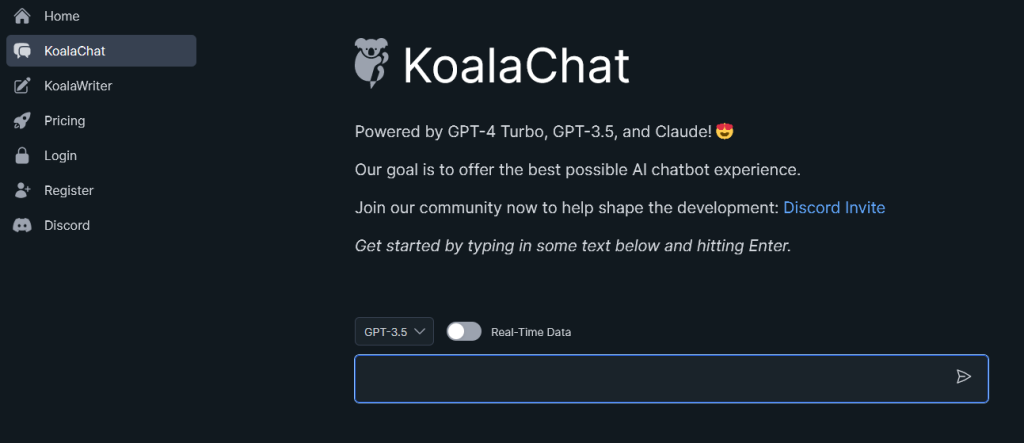
Introducing KoalaChat, the user-friendly AI bot that swiftly responds to your burning questions while considering the relevance of data. It lets you tap into multiple language models, empowering you to choose from a variety of options independently. The writing interface comes packed with advanced features specifically crafted for marketers and copywriters. KoalaChat’s pricing is just $9 per month, making it a perfect fit for tasks like data gathering, copywriting, and AI model experiments.
Enjoy an unlimited query limit and leverage language models such as GPT-4 Turbo, GPT-3.5, and Claude. The platform’s strengths lie in its tailored writing functions, enhanced clarity, personalized feedback, and seamless integration options like Google Docs.
On top of that, KoalaChat prides itself on a straightforward interface and a friendly chat style, allowing users to switch between different language models effortlessly. However, it’s important to keep in mind that the platform does have its drawbacks, including a somewhat slow response time and limited capabilities.
Key features of KoalaChat include real-time data search, a grammar and style checker, a plagiarism checker, SEO analysis, and one-click WordPress publishing. Despite its cons, KoalaChat provides a comprehensive suite of tools for users involved in content creation and data analysis. The free trial/plan offers 5,000 words and 25 chat messages, with tiered pricing options starting at $9 monthly or $81 annually.
Grok (Not Available Yet)
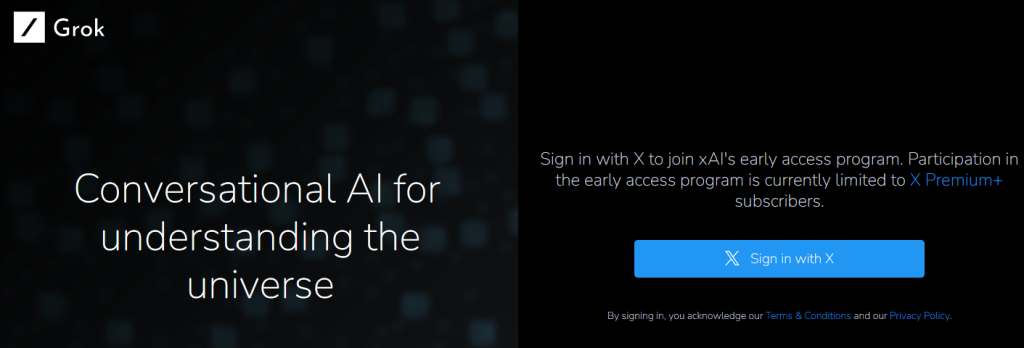
Grok AI, a collaborative project involving X (previously known as OpenAI) and Elon Musk’s Neuralink, is currently in the works as a cutting-edge large language model (LLM). Although it’s not accessible to the public yet, it’s drawing attention for its distinctive qualities and the promise of surpassing ChatGPT.
One standout feature of Grok is its commitment to transparency, employing Explainable AI (xAI) to provide explanations for its reasoning and outputs. This move is seen as a potential boost to trustworthiness and usability. Grok also sets itself apart with a playful and sarcastic sense of humor, a departure from the more serious tone of other LLMs. This characteristic has sparked both interest and criticism, with some viewing it as refreshing and others as unprofessional.
Grok excels in understanding and generating code, showcasing its potential value for developers and programmers. Drawing on data from X (formerly Twitter) and the internet, Grok brings a unique perspective and emphasis compared to ChatGPT.
As of now, Grok is in its early stages, with limited access granted to a select number of users through a waitlist. Ongoing exploration is taking place to uncover its full capabilities and performance relative to ChatGPT.
In terms of strengths, Grok stands out in xAI, humor, and code understanding, presenting potential advantages. However, challenges such as limited availability, less advanced development, and a potentially divisive personality could hinder its progress.
TruthGPT (Not Available Yet)
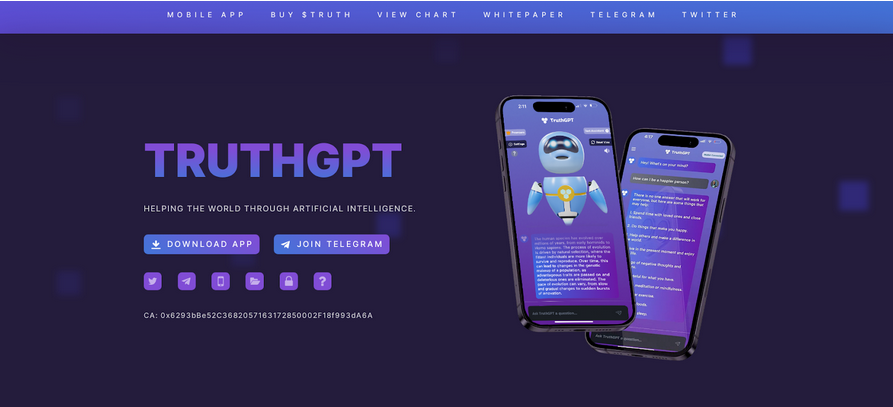
TruthGPT, a recently launched chatbot leveraging advanced GPT technology, has entered the scene. Despite Elon Musk’s founding involvement in OpenAI, the entity behind ChatGPT, he’s been critical of both the application and the company. Musk disapproves of the shift from its original open-source, non-profit structure to a closed-source, profit-oriented model under Microsoft’s control.
The primary goal of TruthGPT is to provide unbiased information by sourcing data from various channels. Positioned as a “maximum truth-seeking AI,” its mission extends to understanding the universe and addressing potential threats to humanity. TruthGPT operates as a chatbot, accessible through its embedded web app and Telegram. The platform offers a user-friendly experience without requiring mandatory registration or the provision of personal details.
One notable aspect of TruthGPT is its integration of blockchain technology and the introduction of its cryptocurrency token, $TRUTH, with a capped total supply of 1 billion. This token acts as a payment method for users looking to upgrade to TruthGPT’s premium version. The whitepaper outlines $TRUTH’s additional features, such as perks for advertisers, opportunities for users to stake coins for enhanced earnings, and ‘reflections’ for passive earnings derived from any $TRUTH transactions.
ChatGPT Alternative for Social Media
Poe by Quora (Free and Paid)
Meet Poe, Quora’s innovative AI offering, available in both free and paid versions. This dynamic tool is built on a platform that skillfully integrates OpenAI and Anthropic AI technologies, providing a unique learning and interaction experience.
Accessible on Android and Apple devices through user-friendly apps or via the web, Poe excels in delivering prompts and engaging question-and-answer sessions. It transcends the capabilities of traditional search engines, positioning itself as a conversational search engine that caters to a wide array of inquiries.
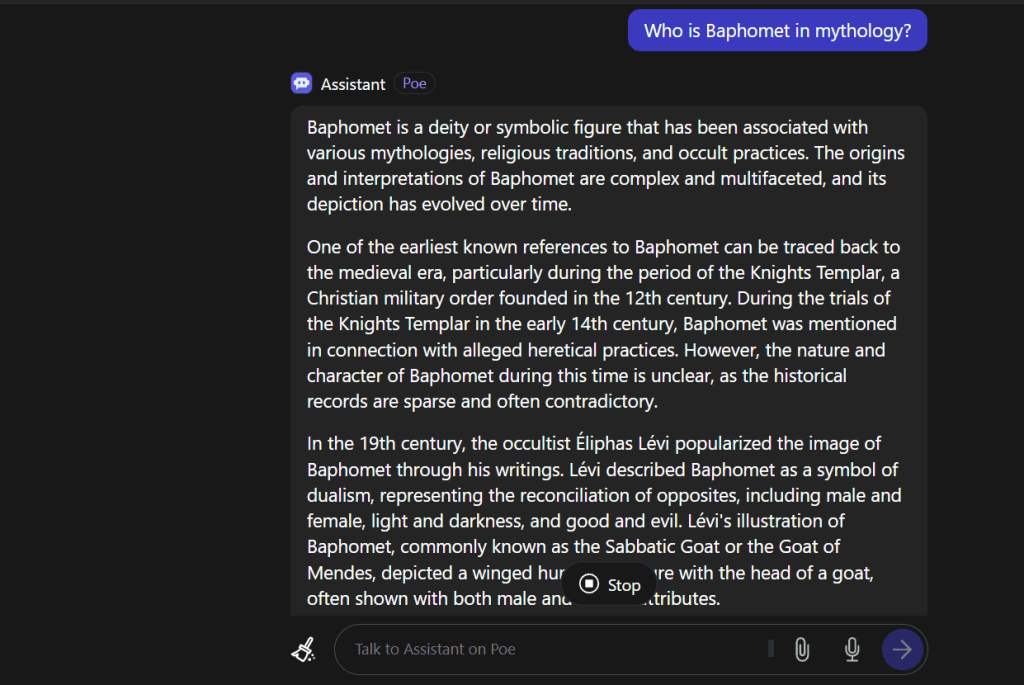
Poe’s versatility is evident as you navigate through different tabs like All, Social, and Image. Whether you’re a curious learner or in need of practical assistance, Poe by Quora is your ideal AI companion.
Chatsonic On Opera (Free and Paid)
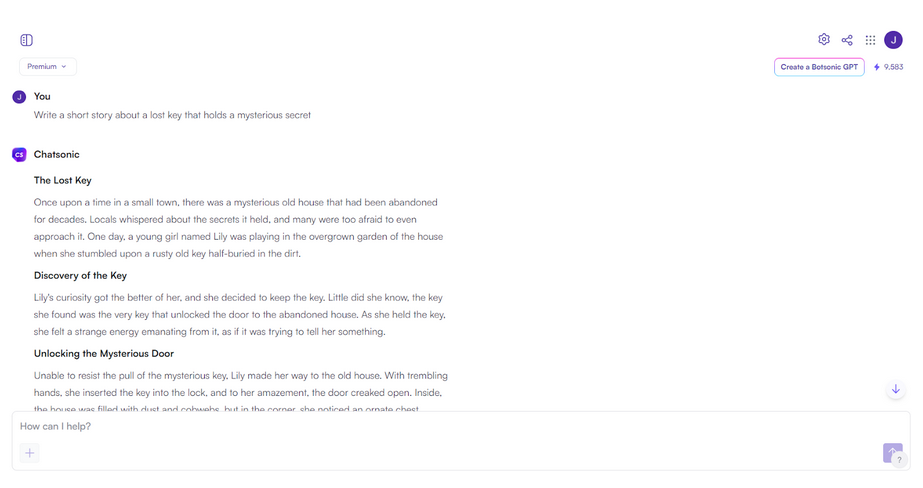
Opera and Chatsonic recently joined forces to elevate the web browsing experience for the Opera browser and Opera GX users. This collaboration streamlines the process of finding information by enabling users to engage in interactive conversations with their browsers, eliminating the need for extensive web searches.
With Chatsonic seamlessly integrated into Opera, users can now instruct their browsers to perform a variety of tasks, including content creation, text summarization, information retrieval, and AI art generation.
Exploring the key features of Chatsonic within the Opera Browser, users can enjoy swift access to relevant information through the AI PROMPTS option, effortlessly generate AI images directly within the Opera browser, craft diverse content from the sidebar, and efficiently summarize web pages and lengthy text. Moreover, users can easily rephrase, shorten, or expand paragraphs and sentences with just a simple click.
For those keen on incorporating Chatsonic into their Opera experience, this product is developed by Writesonic. It is available at a monthly cost of $19, providing a generous allowance of 100,000 words per month. Accessing Chatsonic on Opera requires users to sign up for a Writesonic account, with the added option to initiate a free trial that offers 10,000 words.
NeevaAI (Free and Paid)
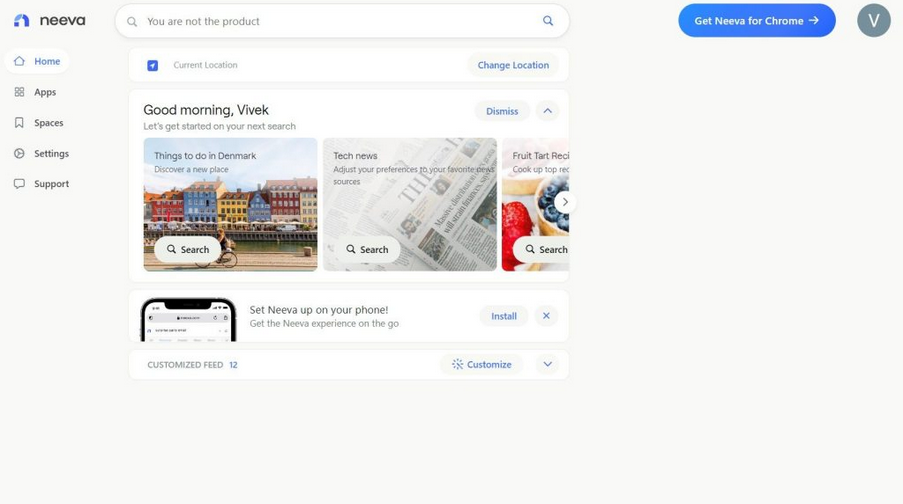
NeevaAI seamlessly combines advanced language models like ChatGPT with the precision and real-time data of the Neeva search engine. Developed by former tech executives Sridhar Ramaswamy and Vivek Raghunathan, this search engine stands out for its ability to navigate through hundreds of millions of web pages, delivering a singular, comprehensive response with pertinent sources.
Although NeevaAI’s key features revolve around an AI-enhanced search engine, it hasn’t fully transformed into an AI-powered chatbot. It offers an ad-free and tracker-free browsing experience, ensuring a more focused search with references included in the results.
Neeva’s subscription plan is priced at $4.95 per month, with an accompanying free trial period. Despite integrating ChatGPT to enhance user interaction, NeevaAI does not currently possess conversational AI capabilities.
ChatGPT Alternative For Productivity
Chatsonic Slack Bot (Free)
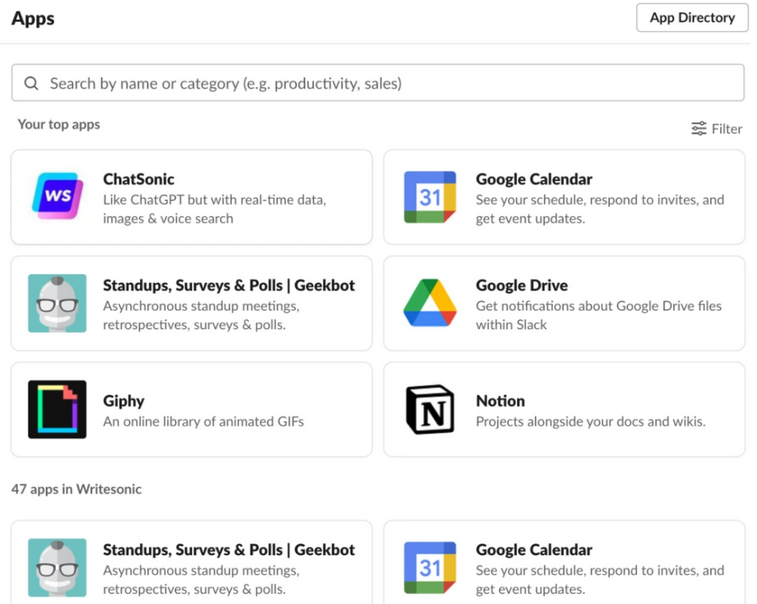
Enhance your Slack experience with Chatsonic, an innovative AI chatbot designed to enhance your conversations. This cutting-edge tool brings real-time data generation, voice command understanding, and even digital art creation to the table, offering a range of features and entertainment beyond your favorite ChatGPT.
Chatsonic Slack Bot goes beyond the basics, improving team collaboration by helping you craft clear messages and polls for quick feedback. It adds a visual element to communication with AI-generated images and graphs, making it easier to grasp complex topics. Beyond its utility, this friendly bot also acts as a personal coach, providing the motivation you need to stay on track.
Regarding pricing, you can seamlessly integrate this Slack bot for free, complete with 10,000 premium words to kickstart your usage. If you find yourself needing more, there’s the option to upgrade, unlocking over 80 AI writing features on the Writesonic web app.
CoGram (Paid)
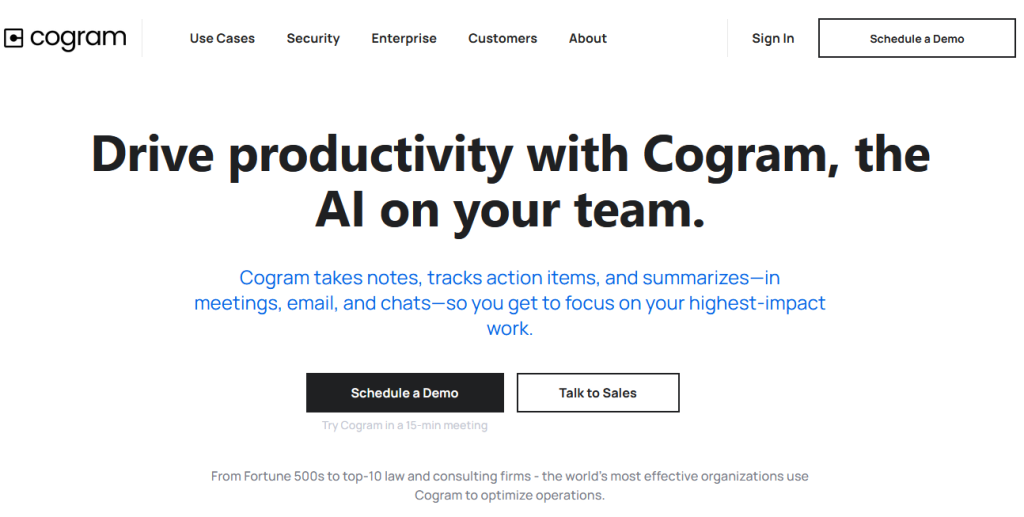
CoGram serves as an alternative to ChatGPT, allowing you to effortlessly generate notes during virtual conferences while prioritizing the privacy and security of your data. It ensures you stay updated on crucial action items by tracking and summarizing meetings and syncing essential information with your CRM.
In addition, CoGram is a valuable tool for time-saving tasks like transcribing, summarizing, and extracting key details from call recordings, webinars, and public hearings. The software creates comprehensive and accurate minutes, promptly identifies tasks, and compiles concise meeting summaries.
Users can easily schedule CoGram to join meetings through their Calendar, offering instant access to every spoken word and action item. The software seamlessly integrates with popular platforms such as Google Meet, Teams, and Zoom, becoming an integral part of your daily routine.
In terms of pricing, CoGram provides a free service for the initial fifteen minutes. For continued usage tailored to your meeting requirements, feel free to reach out to them for personalized pricing. CoGram proves to be a valuable asset on busy meeting days, automating the creation of meeting minutes and enhancing overall work efficiency.
Otter (Free and Paid)
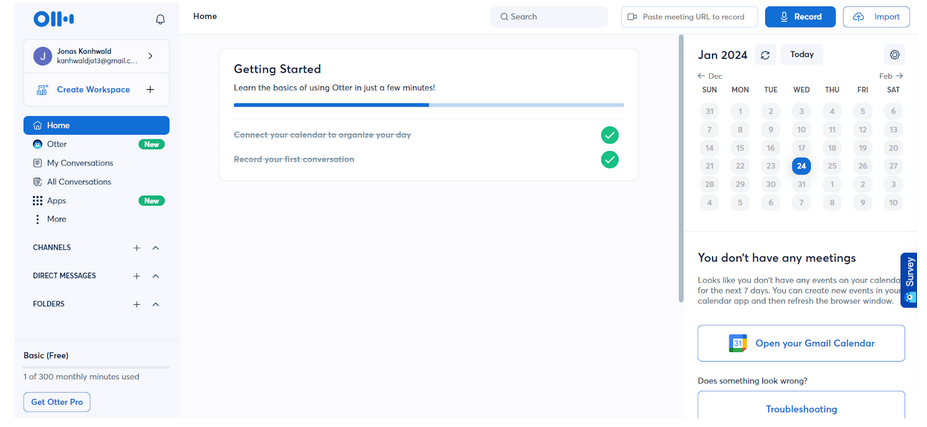
Otter presents a practical option for those aiming to boost their productivity during the workday, setting itself apart as an alternative to ChatGPT. Functioning as a personal meeting assistant, Otter goes beyond simple audio recording by seamlessly taking notes, capturing slides, and automatically summarizing entire conversations.
A closer look at Otter’s features showcases its positive impact on productivity. This alternative excels in helping users stay concentrated by recording notes and transcribing audio simultaneously, proving especially beneficial in both face-to-face and virtual educational environments. Thanks to real-time captioning and note-taking, instructors and researchers find it easy to keep pace with lectures and discussions. The technology efficiently converts spoken words into text, providing valuable resources to enhance the efficiency of conversations.
In terms of pricing, Otter caters to various needs, offering a free usage option. Furthermore, for those seeking additional features, there’s the Premium subscription at $17 per month, while Business subscribers can opt for a $30 monthly plan that includes a seven-day free trial.
ChatGPT Alternative For Building Your Own AI Chatbot
Botsonic (Free and Paid)
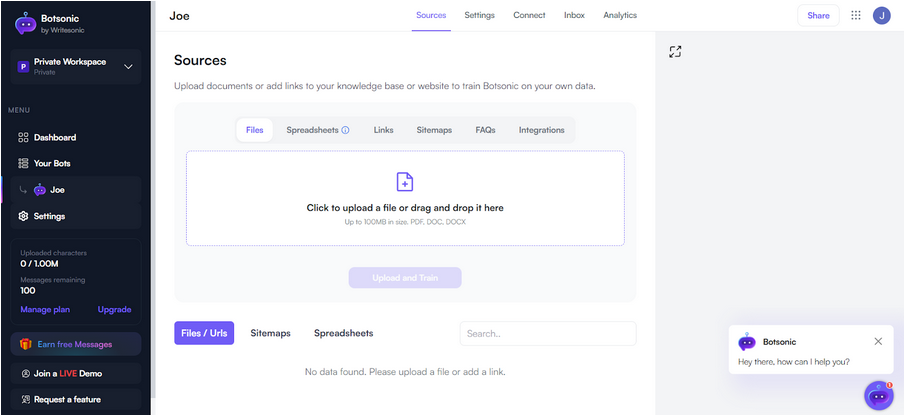
Introducing Botsonic, the user-friendly chatbot builder developed by Writesonic. This platform makes it a breeze for individuals to effortlessly create a no-code chatbot, similar to ChatGPT, using their own data. Integrating your custom chatbot into a website is a piece of cake, thanks to the simplified process using an embed code or API key.
Powered by cutting-edge NLP-based technology, this AI Chatbot builder allows users to train ChatGPT on their knowledge base, equipped with impressive GPT-4 capabilities. Botsonic serves as a comprehensive solution for various purposes, whether you need it for customer support or as a marketing chatbot, promising an ever-evolving user experience.
Key features of Botsonic include the easy training of ChatGPT on business/company data, seamless integration into websites through an embed code or API key, and the flexibility to customize the AI chatbot to align with brand identity elements like colors, logo, and a welcoming message. Users also have the option to provide a contact number for additional customer support.
For those intrigued by Botsonic, it’s seamlessly integrated into the Writesonic suite and is accessible within the Writesonic web app. The platform even offers a free trial to users who sign up, allowing them to explore its capabilities at no cost.
Zapier Chatbots: For Building Own Chatbots (Free and Paid)
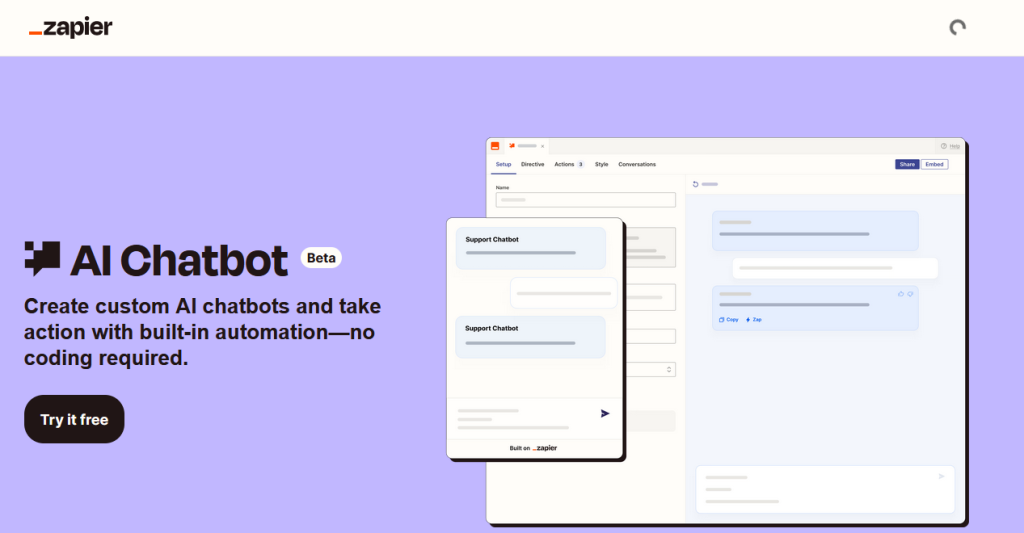
The Zapier Chatbots tool is an excellent resource, and it’s completely free! This tool simplifies the process of creating personalized, AI-driven chatbots that leverage the capabilities of GPT. Setting up your chatbot is a straightforward task – just assign it a name, include a friendly greeting if you prefer, and establish a prompt placeholder to guide users. Then, provide some instructions to define your chatbot’s identity, knowledge base, and preferred responses.
One notable feature is its adaptability. You have the flexibility to adjust the creativity level and customize the appearance of your bot. Whether you want your bot to be a knowledgeable guru or align it with specific documentation needs, it’s easily achievable. For those seeking quick solutions, there are pre-made templates available, such as the Business Coach bot, Explain bot, or ZapChat bot.
The tool’s versatility extends to creating different applications like a corporate jargon translator, a press release generator, or a risk assessment bot. Once your chatbot is ready, you can design a landing page for it, complete with a unique URL for convenient sharing.
Zapier addresses various automation needs through its different plans. The Free plan covers essential features, while the Starter plan (starting at $29.99/month) adds Multi-step Zaps and data tools. If you’re looking for more advanced options, the Professional plan (from $73.50/month) includes Conditional Zaps and advanced settings. The Team plan (starting at $103.50/month) offers unlimited users, shared connections, and Premier Support. Companies can explore the Company plan for advanced features – reach out to Sales for all the details.
Conclusion
In summary, while ChatGPT is a renowned tool, exploring its alternatives is essential, given its limitations in the current tech landscape. This guide covers over 20 popular tools, each with a snapshot of its capabilities, to aid in making an informed decision. For more detailed information on specific tools, visiting their respective websites is recommended.
FAQs
What sets ChatGPT 4 apart from its predecessor, ChatGPT 3.5?
ChatGPT 4 represents a significant advancement over ChatGPT 3.5. It not only surpasses its predecessor in performance but also introduces the Plus membership, featuring faster response times and additional functionalities like web browsing, advanced data analysis, and plugin support. Note that ChatGPT 4 Plus has a limitation of 25 messages every three hours.
How do I choose a suitable alternative for ChatGPT?
Choosing the right ChatGPT alternative involves defining your specific needs and considering the categories outlined in this post. Evaluate the features of the alternatives within your chosen category to find the most specialized and efficient AI tool for your requirements.
Do ChatGPT alternatives provide multi-language support?
Yes, many ChatGPT alternatives do provide multi-language support. These alternatives are designed to understand and generate text in various languages, making them versatile and suitable for global applications. It’s important to check the specific language capabilities of each alternative to ensure they align with your project’s linguistic requirements.
What security measures are in place for ChatGPT alternatives?
ChatGPT alternatives typically implement a range of security measures to protect user data and ensure system integrity. These measures often include data encryption, access control, and compliance with data protection regulations such as GDPR. Regular security audits and updates are also common practices to maintain a high level of security.
